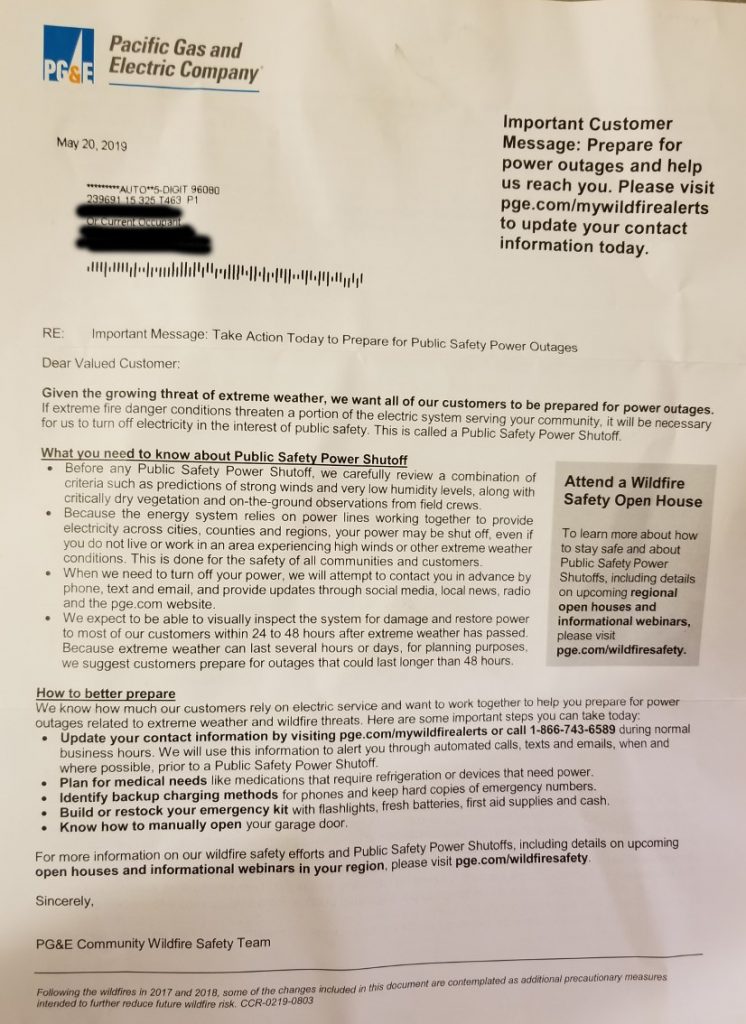Category: Hot Topics
Yellow Vests: Macron’s Assault on the French People
Artificial Intelligence: it will kill us | Jay Tuck | TEDxHamburgSalon
Artificial Intelligence: it will kill us | Jay Tuck | TEDxHamburgSalon
FBI says utility pole surveillance cam locations must be kept secret Policy —
Policy —
“Disclosure of even minor details about them may cause jeopardy,” bureau says.
Read more “FBI says utility pole surveillance cam locations must be kept secret Policy —”
Utility Poles – Spy on US . . . did you know that?
Covert Law Enforcement: Reliable, Custom Video Surveillance Gear
Surveillance Cameras | Electronic Frontier Foundation
https://www.eff.org/pages/surveillance-cameras
Surveillance Cameras
Surveillance cameras are one of the most ubiquitous and recognizable technologies used to watch us as we move about our daily lives. Networks of cameras are installed by government agencies and by local businesses, but the distinction blurs with the development of real-time crime centers that access both public and private video feeds. Camera technology is growing in sophistication: some cameras are capable of 360-degree video or infrared vision. Some models can be equipped with real-time face recognition or license plate recognition software. Since many are also being connected directly to the Internet, the camera networks have also proven easy targets for malicious attackers.
Recognizing the Types of Cameras
Read more “Surveillance Cameras | Electronic Frontier Foundation”
Face Recognition | Electronic Frontier Foundation
https://www.eff.org/pages/face-recognition
Face Recognition
Face recognition is a method of identifying or verifying the identity of an individual using their face. Face recognition systems can be used to identify people in photos, video, or in real-time. Law enforcement may also use mobile devices to identify people during police stops.
Read more “Face Recognition | Electronic Frontier Foundation”
Tactical Pole Cameras and Scopes | Hendon Publishing
http://www.hendonpub.com/resources/article_archive/results/details?id=4951
Tactical Pole Cameras and Scopes
With tactical pole cameras and scopes, officers can covertly see and monitor activity behind walls and ceilings, under doors, and in darkened conditions. The following companies provide a broad range of video systems and vision solutions that allows tactical team operators to perform their jobs safely and effectively in time-critical situations.
Read more “Tactical Pole Cameras and Scopes | Hendon Publishing”
Site Monitoring & Security | Sensera Systems
Every Angle Covered.
Portable, plug ‘n play site security and monitoring
Providing outdoor security camera and surveillance solutions for large and/or remote areas is not easy. Providing power and communications can mean trenching, permits, adding significantly to costs and schedule. Cameras have a limited coverage and so must be placed close to the areas of interest. IP based cameras are a requirement to provide scalability and compatability. All Sensera cameras can be easily moved to provide better or temporary coverage of a different area.
5G Dangers as Reported on the Drudge Report 5/20/19 – is it too LATE
Read more “5G Dangers as Reported on the Drudge Report 5/20/19 – is it too LATE”
5G – MIMO – Did YOU Know About This? What is Massive MIMO 5G technology? – Sprint Business Posted
https://business.sprint.com/blog/massive-mimo/
Determining factors
A key to the advanced networking future that 5G promises is Massive MIMO. It’s a term you’re likely to hear increasingly about as the industry moves forward with 5G implementation, and it’s one that is worth taking a closer look at.
Massive MIMO (multiple input/multiple output) is all about antennas, radios, and spectrum, all working together to give the kind ofspeed, capacity, and other benefits businesses are looking forward to in our coming 5G world.


